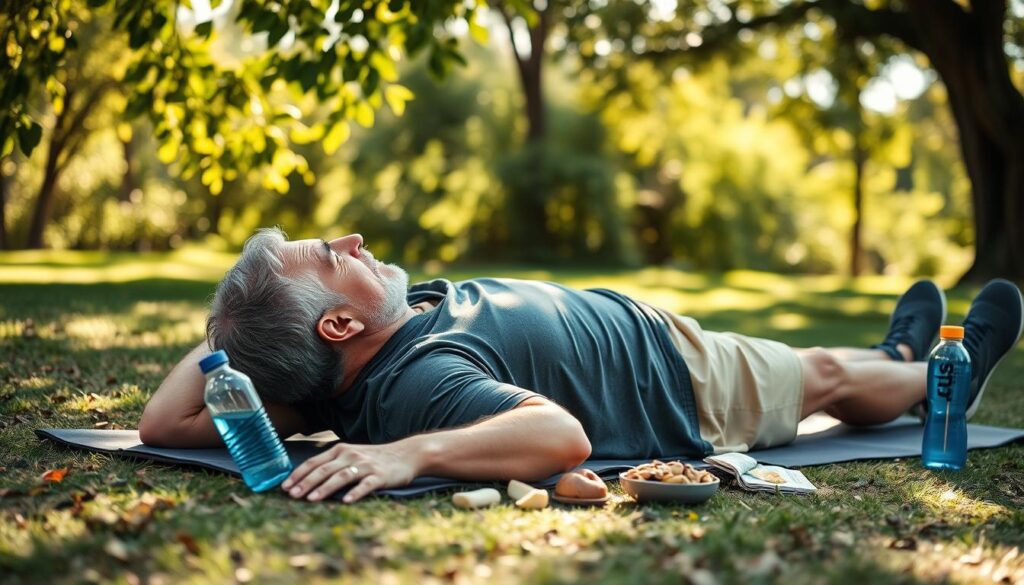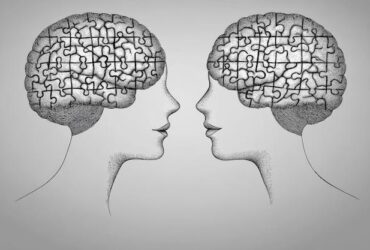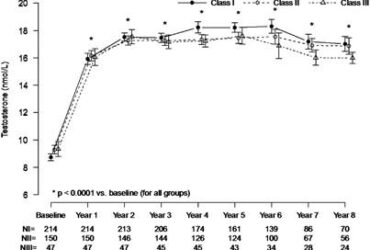As men get older, their testosterone levels drop. This happens at a rate of 1-2% each year after 30. This decline can cause issues like less muscle, lower libido, and brain problems. But, some exercises can help boost testosterone in men over 40.
Resistance training, like weightlifting, is key. It can really increase testosterone. High-Intensity Interval Training (HIIT) is also great. It’s better for testosterone than long cardio sessions. Adding these exercises to your routine can help keep your testosterone levels up as you age.
We’ll look at how exercise affects testosterone levels. This will help you create a workout plan that supports your hormones and health. Whether you want to build muscle, improve your brain, or have more energy, the right exercises can help. They’re especially useful for men over 40 looking to boost their testosterone.
Understanding Testosterone Production After 40
As men get older, their testosterone levels go down. Testosterone is the main male hormone, peaking at 19 and then dropping by 1-2% each year after 30. This decline affects a man’s health and happiness.
Natural Testosterone Decline with Age
Studies show that men’s testosterone levels have been falling over time. This might be due to toxins like Bisphenol A (BPA) and phthalates. After 40, testosterone levels drop by about 1% each year.
Impact of Low Testosterone on Men’s Health
Low testosterone can lead to many health problems, including obesity and higher disease risk. It can also shorten life. Signs include less muscle, lower sex drive, tiredness, and mood swings. Keeping testosterone levels healthy is key for men’s health and sex life.
Signs of Low Testosterone Levels
- Reduced muscle mass
- Decreased libido
- Fatigue
- Mood changes
Testosterone is important for women’s health too, though in smaller amounts. It’s vital for both men and women to check their testosterone levels and keep them balanced.
| Factors Affecting Testosterone | Impact on Testosterone Levels |
|---|---|
| Diabetes | Over a 10-year period, the risk for developing abnormally low testosterone levels more than doubles in diabetic individuals. |
| Body Mass Index (BMI) | For every one-point drop in BMI, testosterone levels increase by approximately 1 point. |
| Alcohol Consumption | Excessive alcohol consumption (more than two drinks a day) increases the conversion of testosterone to estrogen. |
| Opioid Use | Morphine and other opiates can lead to a decrease in testosterone levels, with levels dropping as quickly as a few hours after starting opioid medications. |
Exercise for Testosterone: The Scientific Connection
Research has shown a strong link between exercise and testosterone in men. Studies have found that regular workouts can boost testosterone, especially for men over 40.
A 2004 study on older men found that exercise increased testosterone and growth hormone. This improved brain function and overall health. A 2012 study also showed that regular exercise raised testosterone levels in men.
Some exercises are better than others for testosterone. Resistance training and high-intensity interval training (HIIT) are top choices. They significantly increase testosterone levels in both the short and long term.
| Exercise Type | Impact on Testosterone |
|---|---|
| Resistance Training | Proven to be highly effective in increasing testosterone levels, with greater intensity and volume leading to more significant boosts. |
| High-Intensity Interval Training (HIIT) | Intense, short bursts of exercise followed by recovery periods have been found to stimulate testosterone production. |
| Endurance Training | While endurance exercise can provide various health benefits, its impact on testosterone levels is typically less pronounced compared to resistance training and HIIT. |
The science is clear: exercise benefits for men and testosterone fitness are closely linked. Men over 40 can boost their testosterone by choosing the right exercises. This supports their health and wellbeing.
Resistance Training: The Ultimate T-Level Booster
Resistance training is the top choice for boosting testosterone. Studies show that men who do strength training 3 days a week see a big jump in testosterone. The right exercises and training methods are key.
Compound Lifts for Maximum Impact
For the best testosterone boost, focus on compound exercises. These are squats, deadlifts, and bench presses. They work many muscles at once, boosting testosterone and human growth hormone.
Optimal Sets and Repetitions
Doing 3-4 sets of 8-10 reps per exercise is best. This mix of intensity and volume is most effective for testosterone.
Rest Periods Between Sets
Longer rest times, about 120 seconds, are better for testosterone. They let the body recover and respond better to the workout.
Adding these resistance training benefits to your routine boosts testosterone. It supports your health and well-being.
High-Intensity Interval Training (HIIT) Benefits
As men age, keeping testosterone levels high is key for health. Luckily, research shows HIIT can help boost testosterone.
A study on male masters athletes (60 ± 5 years) showed great results. After six weeks of HIIT, their peak power output went up. Their free testosterone levels also saw a slight increase.
HIIT’s benefits for testosterone don’t end there. A study on healthy men aged 35 to 40 saw big improvements. Their testosterone levels jumped by 36.7%, and their testosterone-to-cortisol ratio rose by 59%. They also saw a 12% drop in cortisol, which helps testosterone.
HIIT works by improving hormone balance. The intense workouts followed by rest periods help produce more testosterone. Combining HIIT with resistance training can increase testosterone levels and support health.
While HIIT is great for testosterone, it’s not for everyone. Age, fitness level, and health can affect how well it works. Always talk to a healthcare professional before starting any exercise program to get a plan that fits your needs.
Common Exercise Mistakes That Lower Testosterone
As men get older, keeping testosterone levels high is key for health. But, some exercise habits can actually lower testosterone. We’ll look at these mistakes and how to avoid them.
Overtraining Risks
Overtraining is a big problem for testosterone. Doing too much exercise without rest can raise cortisol, a stress hormone. Elevated cortisol levels can lower testosterone, affecting muscle growth, energy, and sex drive.
Excessive Cardio Impact
Cardio is good for health, but too much can harm testosterone. Long runs or cycling can lower testosterone. This is because endurance training stresses the body, upsetting hormone balance.
Recovery Mistakes
Not resting enough between workouts is another mistake. Not giving the body time to recover can lower testosterone. Skipping nutrition, sleep, and stress relief after exercise makes it worse.
| Exercise Mistake | Impact on Testosterone | Recommended Solution |
|---|---|---|
| Overtraining | Elevated cortisol suppresses testosterone | Implement active recovery days and ensure sufficient rest periods between intense workouts |
| Excessive Cardio | Prolonged endurance activities can disrupt hormonal balance | Prioritize a balanced exercise regimen that includes resistance training and moderate cardio |
| Inadequate Recovery | Neglecting rest and nutrition hinders natural testosterone fluctuations | Focus on post-workout nutrition, quality sleep, and stress management to support recovery |
By avoiding these exercise mistakes, men over 40 can improve their health and energy.
Nutrition and Recovery for Optimal Results
Eating right and getting enough rest are key to boosting testosterone through exercise. A diet full of protein, healthy fats, and carbs helps keep testosterone levels high. But, too much dieting or eating can mess with hormone balance.
Getting 7-10 hours of sleep each night is vital for testosterone. Stress, though, can lower testosterone by raising cortisol. Yoga, meditation, and exercise can help manage stress and support testosterone production.
For the best results from your workout, eat well and rest well. The diet for testosterone should include lots of whole foods. Exercise recovery strategies, like rest and stress control, also boost testosterone levels.

Dietary Considerations for Testosterone
- Eat protein-rich foods like lean meats, eggs, and dairy to help muscles grow and repair.
- Add healthy fats from avocados, nuts, seeds, and fatty fish to support hormone production.
- Include carbs from whole grains, fruits, and veggies to give you energy and keep you healthy.
- Make sure to get enough zinc, magnesium, and vitamin D, as they’re important for making testosterone.
Recovery Strategies for Optimal Testosterone
- Try to sleep 7-10 hours each night to help your body make testosterone naturally.
- Use stress management like meditation, yoga, or deep breathing to keep cortisol in check.
- Give your body time to rest and recover between workouts to avoid overtraining and testosterone drops.
Lifestyle Factors Supporting Exercise Benefits
Getting the most from your workouts is more than just going to the gym. Keeping testosterone levels healthy as you age needs a complete approach. This includes good sleep, managing stress, and smart supplements to boost your exercise’s effects.
Sleep Quality and Duration
Good sleep is key for making testosterone. Research shows that just 5 hours of sleep can cut testosterone by 10-15%. Try for 7-9 hours of sleep each night. This is when your body makes hormones, including testosterone.
Stress Management Techniques
Too much stress can hurt your testosterone. High cortisol from stress stops your body from making testosterone. Try activities like meditation, yoga, or deep breathing to keep your hormones balanced.
Supplement Considerations
Some supplements can help with testosterone when you exercise. Vitamins like vitamin D, minerals like zinc and magnesium, and herbs can help. But, always talk to a doctor before taking any supplements, especially if you’re over 40.









